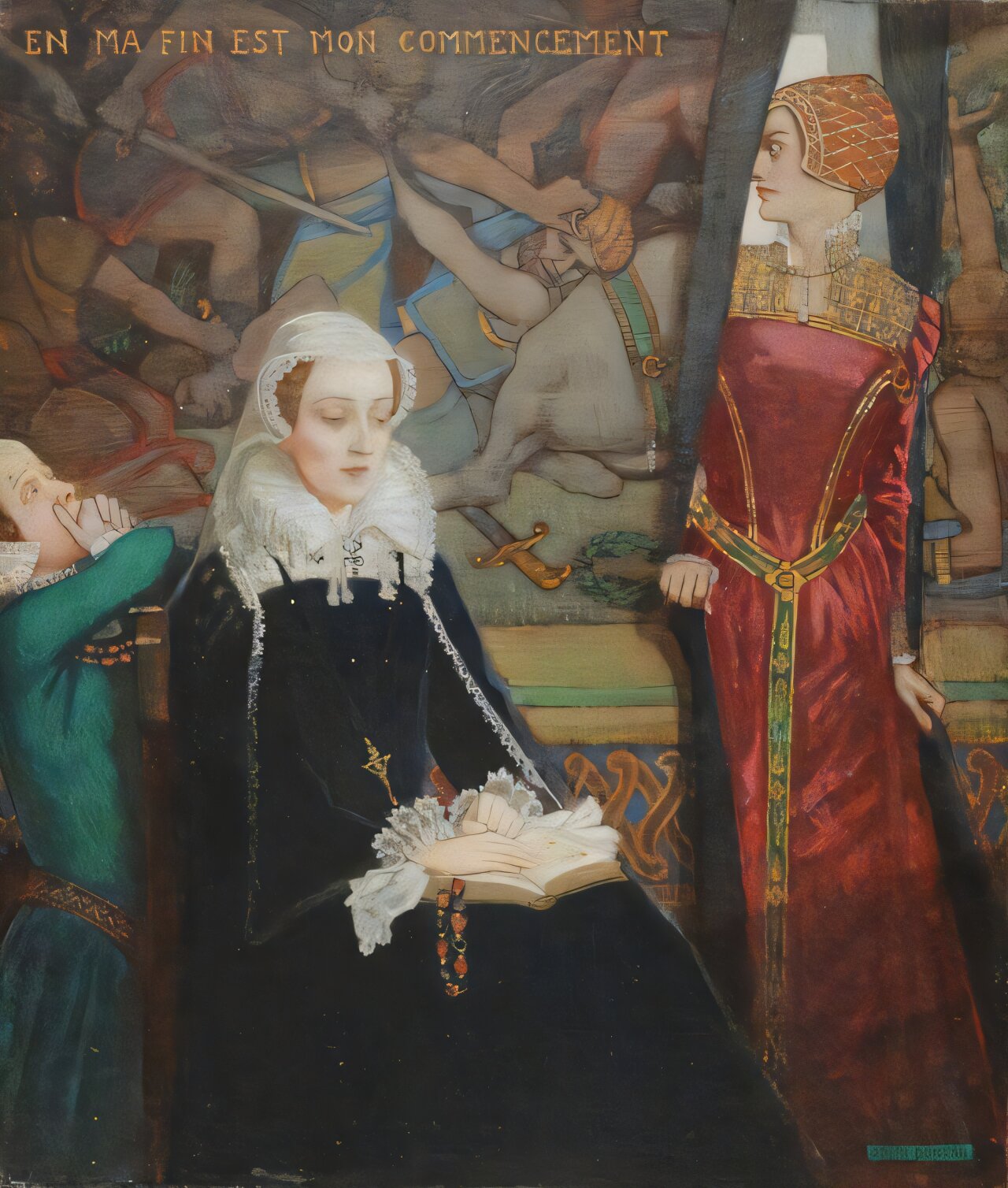Mary, Queen of Scots spent almost 20 years in captivity. She was held in various locations across Britain from 1568 until her execution on February 8, 1587. As I explain in my new book, Captive Queen: The Decrypted History of Mary, Queen of Scots, during this period she relied upon letters to maintain her support back in Scotland, encourage international allies to join her cause and foster allegiances in England.
Mary was aware that her letters were routinely read by her jailers and passed on to be scrutinized by Elizabeth I’s closest advisers, notably William Cecil. At times, she was forced to rely on clandestine techniques, including writing in invisible ink. She wrote that “although such artifices be very hazardous and vulgar, they will serve me in extreme necessity.”
Less technical means of conveying correspondence covertly also proved useful. Letters were regularly passed surreptitiously in clothing. They could be slipped under the sleeves of ladies’ gowns, sewn into doublets, or even packed into the heel of a shoe.
In 1572, Mary’s longest-serving custodian, the earl of Shrewsbury, George Talbot, reported that he had discovered that Mary was having letters left hidden under stones in the gardens. These would be collected later by servants and carried off the property, to avoid unwanted attention.
Mary also used complex ciphers to disguise the contents of her correspondence, especially when she wished to discuss plots designed to set her free. Hundreds of her coded letters survive in different forms (as copies, translations, and originals), many of them from supporters who were directly involved in schemes including the Babington plot of 1586, which aimed to assassinate Elizabeth I and replace her with Mary.
The women who carried Mary’s secrets
The role of women in Mary’s coded correspondence is often overlooked. Yet she relied upon her female supporters to ensure that covert networks were maintained during her captivity.
The countess of Northumberland, Lady Anne Percy, was one of the noblewomen at the heart of a transcontinental network of Catholic exiles who went to great efforts to preserve clandestine channels of communication between themselves and Mary.
In August 1571, William Maitland of Lethington, Mary’s principal secretary in Scotland, wrote to her. He explained that he had shared a new cipher so that Lady Percy could write to Mary secretly. Several years later, Mary confirmed that she was still writing in code to Lady Percy and receiving such letters in return.
Similarly, Mary communicated with Scottish noblewomen using ciphers. Lady Livingston, Agnes Fleming, journeyed with Mary into England in late 1568 and remained by her side in captivity until 1572, when she returned to Scotland. We know that she communicated with Mary using coded letters because in 1573 Lethington warned her that she must stop using their usual cipher.
He explained that the letter bearer had been arrested and so their cipher was likely “known to their adversaries.” Lady Livingston remained a loyal supporter of Mary after she returned to Scotland. She was even briefly imprisoned in Dalkeith by the regent of Scotland, James Morton, for sharing news and intelligence via secret messages.
Lady Ferniehirst, Jean Scott, also composed coded correspondence to navigate the surveillance and scrutiny that the Scottish queen was subject to in England. Her husband, Sir Thomas Kerr of Ferniehirst, was exiled in 1573 following his attempts to hold Edinburgh Castle on Mary’s behalf. This meant that during the 1580s, Lady Ferniehirst was crucial to the survival of a network of Scottish nobles who continued to agitate for Mary’s restoration.
She regularly acted as an intermediary between Mary and James VI, allowing at least some of their communication to avoid English detection. Several of Lady Ferniehirst’s own coded letters to Mary survive, and many were intercepted and decoded by contemporary agents seeking evidence of Mary’s plotting.
In 1578, Mary requested that Lady Ferniehirst’s 13-year-old daughter be allowed to join her household in England. Aware of the clandestine correspondence between the two women, this request was denied by Elizabeth I. She suspected that Lady Ferniehirst’s daughter would ensure even more coded letters managed to make their way from Mary to her supporters.
The correspondence of Mary’s female supporters reveals early modern women’s skillful navigation of political crisis. Illuminating the examples of women like Lady Percy, Lady Livingston and Lady Ferniehirst challenges gendered assumptions that have led to women being underestimated or dismissed throughout history.
Provided by
The Conversation
This article is republished from The Conversation under a Creative Commons license. Read the original article.9k5" alt="The Conversation" width="1" height="1"/>
Citation:
Mary, Queen of Scots and the clandestine tricks of the women who kept her secrets (2024, October 27)
retrieved 27 October 2024
from mts
This document is subject to copyright. Apart from any fair dealing for the purpose of private study or research, no
part may be reproduced without the written permission. The content is provided for information purposes only.
